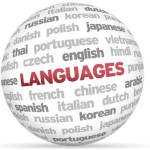
As promised in our last blogpost, in this post we share our view on what makes multilingual universities a success:
1. Promote teaching and learning through multiple languages
There is sometimes a tendency to promote the idea that being a multilingual university today means adopting English as the main language of instruction and marginalising courses taught in the national language. This is not the vision of multilingualism we imagine. As mentioned in one of the responses to our previous blogpost, our concept of a multilingual university is one that supports teaching and learning in the national language and additional languages. Decisions as to which language is used in which course will depend on the needs of the students, the program goals and the University profile.
2. Embrace a CLIL approach
The term Content and Language Integrated Learning (CLIL) emerged in Europe in the 1990s as “a dual-focused educational approach for which an additional language is used for the learning and teaching of both content and language”(Marsh, 2002). We advocate using a CLIL approach to support student learning in both content and language (related to that content) simultaneously.
3. Support CLIL learning by university teachers
University teachers working in a multilingual environment need opportunities to learn about how to manage the demands of teaching both content and language. They need to feel confident and comfortable to teach their subject through another language. Providing courses about CLIL is one effective way to do this. Offering extra language courses can also be beneficial in developing university teachers’ knowledge of, and confidence in, another language. Gaining specific knowledge about the culture and traditions of the local and international adds a further important dimension to enrich teaching and learning.
4. Create opportunities for student-centered teaching
In order for students to successfully learn subject-matter content through a second language they need many opportunities to process and practice the content using the target language (known as ‘output hypothesis’, Swain, 1985). Activating students’ prior knowledge, exposure to varied input, guiding students in relevant speaking and writing tasks and providing them with feedback about content and language are all elements of good teaching generally, but a prerequisite for effective CLIL teaching. Teaching should be student-centered and take place in smaller formations, keeping lecturing to a minimum and allowing students opportunities to actively engage with the content, language and each other.
5. Content and language specialists co-operate and collaborate
For effective multilingual universities to develop, subject matter specialists (i.e. university subject lecturers and tutors) should work together with language specialists (e.g. from the university language center), so as to understand, scaffold and meet student needs in both content and language. This should apply not only to the teaching, but also to the assessment of courses, so that they are perceived by students as an integrated whole.
True multilingualism – a utopian fantasy?
In the above we have outlined some success factors for universities offering programs in a language other than the national language. However, true multilingualism could be argued to imply that instruction and learning take place through several different languages side-by-side, within the same course. We would therefore like to leave you with a question to ponder – what would it look like to create a multilingual university? Is this a desirable goal or simply an academic fantasy?
Mandi Berry & Evelyn van Kampen







Interesting notion. Came across your Blog when searching on multilingual universities. In Malaysia, the National Language is Bahasa Malaysia. English is a popular language preferred by many for education at all levels. However, politics and law have got in the way of popular preferences. In 1996, when a private sector was created in higher education, English was permitted with official approval sought individually for courses offered in private institutions. The law also allowed other languages to be used but there is no evidence that this path is taken by any of the private institutions. This month, much to my surprise, the Ministry of Education has announced a proposal to permit a course of study to be taught in two languages. Subject to official approval of course. It looks like in multi-lingual, multi-cultural Malaysia multilingualism that has emerged finally from the shadows.
We’re interested in bilingual education from a family perspective. Many of the kids we volunteer with have parents who cannot read in their native language, let alone English. Working on learning English together as a family can build both the family relationships and educational opportunities. Some of the materials we have developed are here:
http://www.mygrandmatime.com/3019-2/visit-with-grandma/learn-with-grandma/learn-to-read-with-grandma/